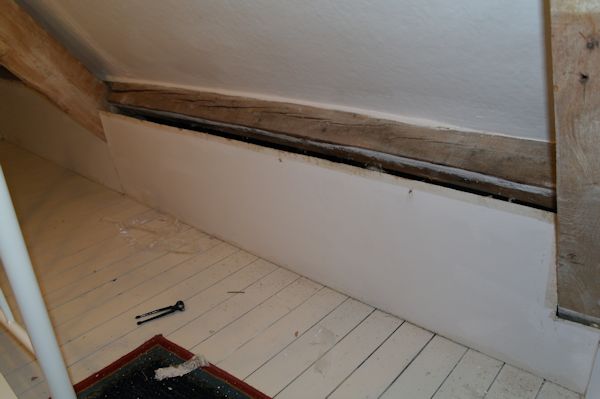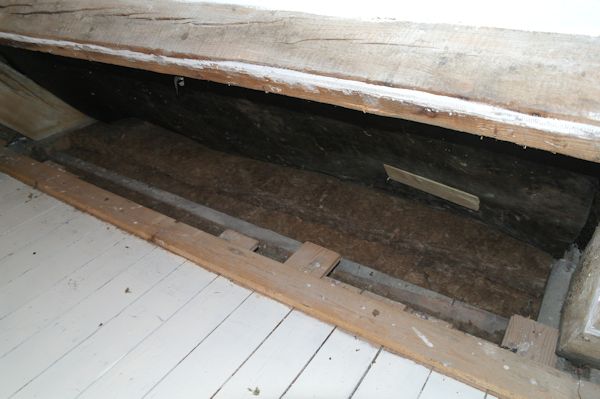Sooo… in-between all my games stuff I continue my hilariously slow process of trying to make my 1750’s drafty house more energy efficient. The big area of the house that is still horribly uninsulated is the attic, which is a sort-of spare room, which we never really use. Maybe twice a year.
because it’s so old, it’s not like insulating a new house with regularly spaced rafters and throwing down some nice easily unrolled insulating thingies. You need to use ‘breathable’ insulation. The attic has about eight wall panels that cover the eaves. I’ve insulated behind 3 already, and today I finally finished the fourth. here is the panel at the start.

behind that is a notable lack of insulation, and some thick felt like stuff hanging down. Look behind and around that and we find that the current insulation is…

Rubble! Yes rubble. huge pieces of slate, stone, some straw, a few long bits of wood, some newspaper, some stuff which I briefly panicked was asbestos, but we now think was just plaster dust. When I say ‘some’ I mean about a dozen bucketfulls of the stuff. methinks modern insulation has moved beyond ‘fill the eaves with rubble and straw!
And here we are with me having put down a nice thick layer of insulation instead of all that dust and rubble.

And here we go with another layer on top of that so it’s double thickness. Insulation achievement unlocked +10 points. Well done.

Apparently it started snowing in the west of England today, so maybe I’ll find out sooner than expected if it makes any difference whatsoever. It makes me feel better anyway :D